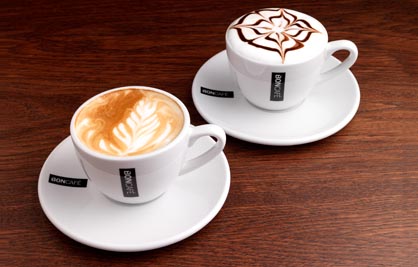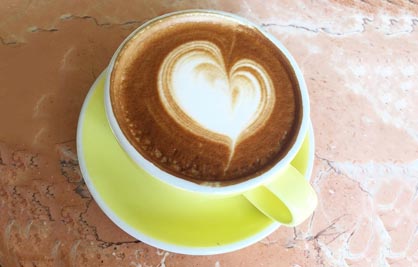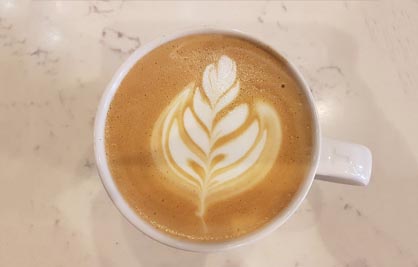How to Make Latte Art?

Latte art won’t make your espresso taste better, but it will show that you care. For best results: use a wide mouth cappuccino cup. Swirl the pitcher of steamed milk before you start, in case the liquid and foam have separated. Pour with a steady hand and consistent, even flow. Your design won’t be perfect the first time, but keep practicing!
HEART
- Take the pitcher in your stronger hand and the cup in your other hand. From about 2 to 3 inches above, start pouring a thin stream of milk into the centre of the cup. The milk should sink below the espresso.
- Continue pouring. When the cup is just over half full, tilt it slightly toward the pitcher, and bring the spout of the pitcher very close to the mouth of the cup. Aim the milk at the centre of the cup. The foam should begin to form a white circle on the surface of the espresso.
- As the circle grows, gradually straighten the cup. When the cup is nearly full, lift the pitcher 2 to 3 inches, aiming the milk closer to the edge of the circle.
- Quickly move the pitcher across the cup, so that the stream of milk cuts back through the center of the circle and all the way out the other side. This will create the divot and point at the bottom of the heart.

ROSETTA
- Take the pitcher in your stronger hand and the cup in your other hand. From about 2 to 3 inches above, start pouring a thin stream of milk into the centre of the cup. The milk should sink below the espresso.
- Continue pouring. When the cup is just over half full, tilt it slightly toward the pitcher and bring the spout of the pitcher very close to the mouth of the cup. Aim the milk near the handle of the cup. The foam should begin to form a white circle on the surface of the espresso.
- Gently shake the spout from side to side while moving the pitcher across the cup, away from the handle. Gradually straighten the cup as you go.
- When you reach the opposite rim of the cup, lift the pitcher 2 to 3inches higher and quickly move it back toward the handle of the cup, so that the stream of milk cuts a straight line through the zigzag pattern. This will create the stem of the rosetta, and transform the zigzag into the leaves.




